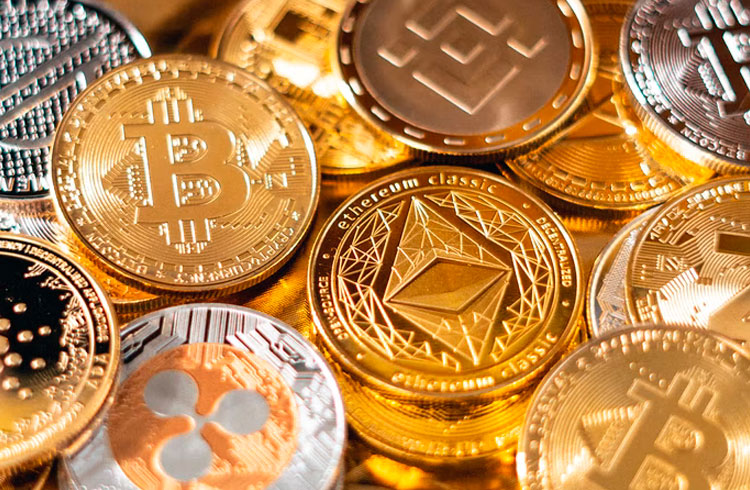Best Liquidity Pool Providers In 2020
7 min readTable of Contents
The liquidity pool is challenging the inadequate liquidity problems of the order book model. For that reason, exchanges won’t depend on bidders and takers to fill the order book. Also, the traditional exchanges who often manipulate trades to lure investors won’t bother doing that again. Consequently, let’s know what necessitated liquidity pools.

Before now, the traditional markets, including Cryptocurrency, stock, and forex suffered inadequate liquidity. For every trade, a buyer will have to wait for a seller to set prices. Until both parties agree on a price, there will be no trade.
However, trades may not happen or sometimes take a longer time. In solving the bureaucratic nature of the order book, seeking a way to provide liquidity becomes necessary because it hinders investment while deterring promising projects.
Meanwhile, the order book model is not limited to centralized exchanges as decentralized exchanges have the same fate at its early stage. Consequently, liquidity pools – through automated smart contracts is filling the gap.
However, it will be interesting that you have a basic understanding of liquidity and why they are needed.
What is liquidity, and why?
Liquidity is often a challenge in stock, forex, cryptocurrency, and other financial services. It refers to the ease at which an asset can be converted into another without affecting the market price.
Consequently, it is one of the order book exchange model’s problems because traders sometimes become unwilling to buy at a certain price level. Therefore, the traditional exchanges resort to a market maker model to create liquidity. However, the same can apply to decentralized exchange.
According to Matthew Prewitt, crypto-economic advisor at Amentum Capital and co-lead of the RadicalxChange and Steven McKie, the CEO of Amentum Capital,
“inbound and outbound liquidity is essential for the creation and growth of financial markets”.
They believe that a liquidity pool should be considered an impressive achievement in decentralized institution-building and a prerequisite for the growth of a whole range of other institutions, financial and otherwise.
What is the liquidity pool?
Liquidity pools are pools of tokens, locked in a smart contract to facilitate trading by providing liquidity. They are used by Automated Market Makers (AMM) to reduce price change when trading on the decentralized exchanges. It provides a unique, less-speculative reason for people to hold tokens that do not have a large user base yet.
How do liquidity pools work?
Liquidity pools are contrary to the order book models. An automated smart contract helps you fill buy/sell orders instead of a matching engine.
Consequently, the pooling methods maintain constant liquidity while reducing unprecedented price swing. Among other advantages of the top liquidity pools are:
- Lower gas fees.
- Enabling everyone to provide liquidity using the automated smart contract.
- Through the help of automated proving, liquidity providers can earn passive income.
How to identify the most profitable liquidity pool?
Therefore, if you ever wanted to trade in a liquid market, you should consider the top DeFi liquidity pool providers. Concurrently, Pools.fyi will guide you on how to find the top 10 liquidity pools.
Top 10 liquidity pool Providers
Bancor is one of the first projects that introduce liquidity and the latter popularized by Uniswap. They are among the top liquidity pools providers as shown below:
1. Uniswap

Uniswap is a decentralized ERC-20 token exchange that supports 50% Ethereum contracts, and 50% of other target assets (ERC-20 tokens) contracts. It allows you to exchange ETH for any other ERC-20 token in a decentralized manner.
It operates an open-source exchange where you can create a new exchange pair in a new liquidity pool for any token and at no listing cost. However, the platform charges swappers 0.3% swapping fee and are shared with the liquidity providers. You may find the token list here or also able to create a new one.
Similar to other liquidity pools providers, you are simply depositing crypto to receive a Uniswap token when you are supplying liquidity. For instance, when you deposit DAI, you will receive an equivalent amount of Uniwap token. It comprises several liquidity pools as follows: yDAI+yUSDC+yUSDT+yTUSD, AD, LGO-WETH, WETH-AMPL, and many other pools.
2. Curve Finance

Curve is an Ethereum based decentralized liquidity pool for stablecoin trading. Similar to Convexity, it affords users low slippage as the stable coin is not volatile. The platform doesn’t have a native token but maybe launching a Curve token (CRV token).
The platform has 7 pools with its own ERC-20 pool pair. It supports swapping for ranges stablecoins and assets in the following pools: Compound, PAX, Y, BUSD, sUSD, Ren, and sBTC.
3. Balancer

It is a non-custodial portfolio manager, liquidity provider, and price sensor, built on Ethereum. It allows anyone to create or add liquidity to customizable pools and earn trading fees.
The Balancer pooling protocol is composable and operates several pooling types, including private, shared, and smart pools. The private pooling allows only the owner to supply liquidity, update parameters, and full permission. Unlike private pools, all parameters like weights, tokens, fees, etc. are permanently set in a shared pool.
Consequently, there’s no special privilege since anyone can add liquidity while the pools’ ownership is tracked with Balancer Pool Token. On the other hand, the smart pool is another variation of private pools where smart contracts control transactions. However, it accepts liquidity anywhere and is tracked with the Balancer Pool Token.
The protocol launched in March 2020 recently distributed a governance token called BAL to liquidity providers through a process called liquidity mining.
Balancer provides several liquidity pools including but not limited to: DIA/USDC, USDC/BAL, NMR/WETH, among others.
4. Bancor

Bancor is an Ethereum based Blockchain protocol that uses pooled liquidity. Similar to Curve, Uniswap, and others, it uses algorithmic market-making mechanisms through the use of “Smart Tokens,” to ensure liquidity and accurate prices by maintaining a fixed ratio vis-à-vis connected tokens (e.g., ETH) and adjusting their supply.
Its liquidity pool is called the Bancor relay. It introduces Bancor stablecoin to solve liquidity volatility due to the dependence on BNT, the native token. Consequently, it supports liquidity pooling between BNT token, Ethereum or EOS tokens, and its stable coin (USDB).
Therefore, it uses BNT, to facilitate swapping between other blockchains, currently supporting Ethereum and EOS chains. Unlike Uniswap with a specific swapping fee, Bancor has varying fees of 0.1-0.5%, depending on the pool.
5. Kyber Network

Kyber is an Ethereum based, on-chain liquidity protocol that allows DApps to provide liquidity to enhance user experience. Consequently, vendors and wallets allow users to pay, swap, receive varieties of the token in a single transaction.
It has a native token called KNC for rewarding and ecosystem governance. Therefore, holders stake the token to participate in the governance and earn a reward as pre-defined by the smart contract.
6. Convexity Protocol
Convexity is a decentralized liquidity pool provider. It establishes a generalized framework for fungible ERC-20 tokenized options contracts called otokens. Users can write collateralized options contracts, and sell those contracts in the form of tokens.
However, as a new concept, it has limited use cases. One special case of the platform is liquidity insurance. Therefore, it is safer for new traders or liquidity providers.
7. ICTE

It is an inter-exchange liquidity pool. It operates a cross-blockchain DeFi protocol that connects regional cloud-based exchanges. According to the project, they believe that connecting exchanges will solve latency, security, and custodial challenges while providing massive liquidity for stakeholders.
However, every exchange functions fully on its own but is within the global ICTE Alpha server infrastructure.
8. DeversiFi

DeversiFi is a non-custodial and decentralized exchange known for high transactions per second. It uses StarkWar’s layer 2 scaling engine to achieve up to 9,000 TPS.
Because of its high speed, it offers an aggregated liquidity pooling and a near-zero fee.
DeversiFi protocol enables private and public cryptocurrency wallets to deposit assets in the native’s smart contract called DeversiFi zkSTARK. Through the smart contract, traders execute off-chain trades and on-chain balance. The activities are performed with NEC token, the protocol’ native token.
The native token, NEC token provides other utility-based advantages including;
- 0% trading fee discount
- Staking in the Nectar DAO that is pledged up to 17,000 ETH.
- Earning from the bur oriented yields.
9. OIN Finance

This is an interesting, new liquidity pool. It is the first DeFi built on Ontology Blockchain. Although it is yet to be launched, it promises to offer various DeFi services like OINwap, wallet, Lend, Stabecoi, and DAO.
With the utility token, holders can supply liquidity and earn as the terms of the smart contracts. However, many details are not available at the time of writing. Regardless, the OIN Finance team recently secured $1m in a private round on August 24, while preparing for public sale two days after.
10. KeeperDAO

Similar to most DeFi liquidity pools, KeeperDAO is an Ethereum based DeFi protocol. It is best called an on-chain DeFi underwriter. The protocol economically incentivizes participation and thus manages liquidation and rebalances application spanning, margin trading, lending, and exchanges.
Conclusion
DeFi has proven to solve the traditional cryptocurrency space’s ravening liquidity challenges through automated smart contracts- liquidity pooling. Consequently, the total locked value of the DeFi is over $8.75 Billion according to the DeFI pulse. However, more and more protocols are still striving to bring more liquidity. Hence, a self-banking aim of DFi will be possible.
Sunil Sharma






